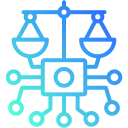AI Transparency and Accountability Standards
Ensuring transparency and accountability within artificial intelligence (AI) systems is essential for building trust, promoting responsible innovation, and protecting both individuals and society at large. As AI becomes an integral part of decision-making across industries, clearly defined standards enable stakeholders to understand, evaluate, and monitor how these technologies are developed, deployed, and governed. This page explores the critical components that form the backbone of AI transparency and accountability standards, offering insights into their significance, implementation, and future evolution.
Previous
Next
Foundations of AI Transparency
Clear algorithmic disclosure means providing understandable information about how AI models reach their decisions or recommendations. For organizations, this involves describing key factors like data inputs, model architecture, and the rationale behind chosen methodologies. By sharing this information in an accessible manner—not just with technical experts but also with laypersons—stakeholders can assess the reliability and appropriateness of AI-driven actions. This openness also enables external audits and reviews, helping identify and mitigate potential risks of bias or error. Ultimately, such clarity empowers users to have greater agency and skepticism when interacting with AI-powered systems.
Mechanisms for Accountability
Assigning roles and responsibilities throughout the AI development pipeline is a bedrock of accountability. Clearly delineated duties—such as data stewardship, model validation, deployment oversight, and post-launch monitoring—help ensure that every critical action and decision is traceable to specific individuals or teams. This accountability structure not only deters negligent or malicious activity but also streamlines investigations and remediation when problems occur. By codifying these roles within organizational policies and public documentation, companies underscore their dedication to transparent and responsible AI operation, fostering stakeholder trust and legal compliance.
International organizations, such as the OECD and ISO, are at the forefront of creating guidelines that set out principles for trustworthy AI. Their recommendations cover areas like transparency, accountability, safety, and human oversight, providing a reference point for governments and businesses alike. By adhering to these recognized standards, organizations not only mitigate regulatory fragmentation across jurisdictions but also demonstrate a commitment to global best practices. These guidelines help sharpen the focus on human-centric values and foster international cooperation, which is vital for the equitable distribution of AI benefits and risks.

